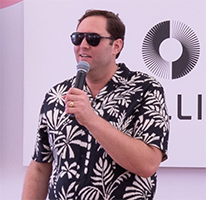The concept of charging consumers a loyalty membership fee was once a hotly debated topic in the industry, with marketers generally opposed to the idea for fear it would create too high of a barrier to enrollment. Turning a free membership program into a paid one was tantamount to loyalty suicide, given the persistent challenge of member inactivity—the Achilles Heel of the loyalty industry.

Then came the launch of Amazon Prime in 2005. A paid membership program in the price competitive retail ecommerce industry became the ultimate test case, greatly influencing both marketer perceptions and consumer acceptance of paying to participate in a program.
For loyalty marketers, charging a membership fee is an attractive option because it solves two key issues:
1. Program Funding
Loyalty programs are a proven marketing strategy to increase customer retention and drive incremental spend. But they’re also very costly, requiring investments in technology, rewards and program management. According to new research report from LoyaltyOne, 71 percent of C-suite executives said they’re investing at least 2 percent of total revenues in loyalty initiatives, with most spending double that when including customer personalization and analytics. Balancing program costs and benefits is an ongoing challenge for many companies, and charging program membership fees can improve that financial equation.
2. Prequalifies Participants It’s not quantity of members but quality of members that is important to a loyalty program’s success. For no fee programs, acquisition tactics such as 20 percent off your first purchase may be effective at driving enrollment but may not attract the ideal program member. While a membership fee does result in a higher enrollment hurdle, if implemented correctly, it also can be an effective pre-qualification tool having greater appeal to a brand’s strongest and best spending customers.
As more and more brands consider launching a paid membership program, or changing their existing no-cost loyalty programs to include an annual fee, the real question comes down to the program’s value proposition to consumers. Can it pass a quick mental math test? Does it offer a clear and compelling payoff for the membership investment?
With over 100 million subscribers, Amazon Prime has proven to loyalty marketers that member fee programs can succeed, despite the participation risks. Instituting a fee-based program is still a big decision and a big bet for brands; one that many will undoubtedly spend millions of dollars on consumer research, financial modeling and operational assessments to evaluate. But don’t count on consumers to do their due diligence, or create an Excel spreadsheet of financial ROI models. The cost-benefit analysis for prospective members must be easily understood, if not obvious, in order to ensure program success.
More on loyalty Marketing:
Here are three examples of premium loyalty programs that pass the quick mental math test with flying colors.
AMAZON PRIME
Cost: $119/year or $12.99//month for monthly subscribers.
Benefits: Free two-day shipping (soon to be one-day shipping), Prime Video, Prime Music and more
Mental Math Test: Depending on how you use it, there are many ways Prime passes: While more retailers are offering free two-day shipping, the cost to upgrade to one-day shipping is typically $20 or more per order. Netflix monthly subscription ranges between $8.99 and $15.99/month and popular family music subscriptions cost $14.99/month. If a consumer only takes advantage of the shipping benefit, the quick mental math test shows a break even at six orders in a year. If you factor in the free streaming video or music benefits on top of the free shipping, Prime easily aces the test.
RH (RESTORATION HARDWARE) MEMBERS PROGRAM
Cost: $100/year
Benefits: 25 percent savings on all full-priced items and an additional 20 percent savings on all sale items, plus service benefits like interior design consultations and concierge service to manage orders
Mental Math Test: For anyone considering making a purchase at RH, this is a no-brainer. For example, if you were to purchase the lowest cost sofa for $1,650, the $100 membership fee will immediately save you over $400. That kind of simple math has led to great member conversion rates. In fact, RH’s 405,000 members accounted for 95 percent of revenue last year, and the brand had sales of $2.44 billion, up about a billion from 2013.
LULULEMON (Test Program)
Cost: $128/year
Benefits: Free pair of pants or shorts, the option to attend curated events, early access to products, and free expedited shipping
Mental Math Test: With the brand’s premium price points, a free pair of pants nearly offsets the annual membership fee right out of the gate. The key for long-term success will be whether the additional benefits that members receive in year one of the program justify re-upping for year two.
While a paid membership program is an attractive option, it’s not the right solution for every brand’s loyalty program. Carefully evaluate whether it’s consistent with the loyalty program’s strategy, target consumers’ purchase dynamics and ultimately will it pass the quick mental math test?
Matt Kates is CMO at Prizelogic.


 Network
Network

